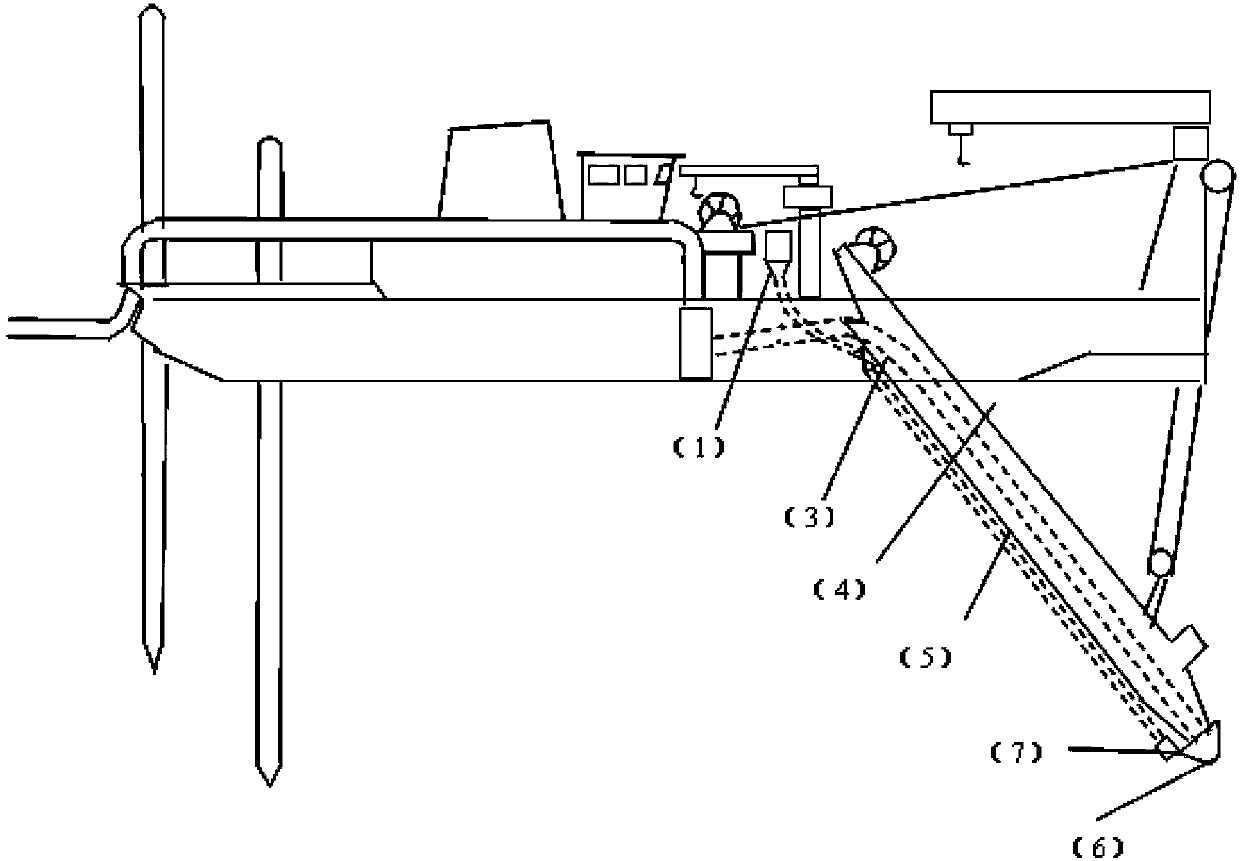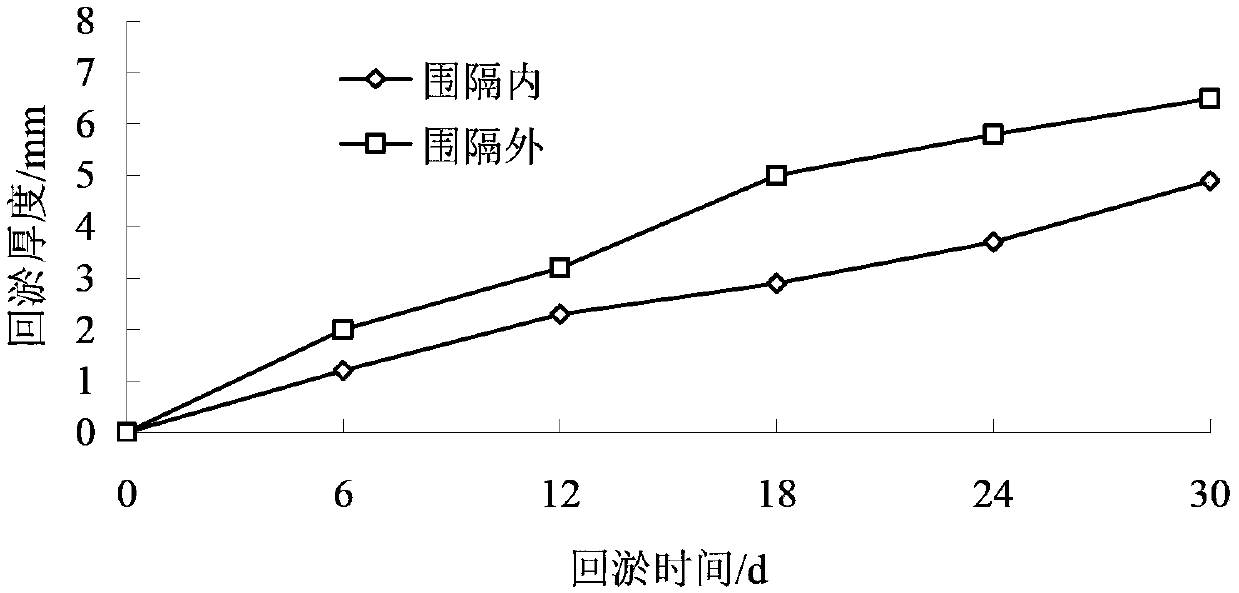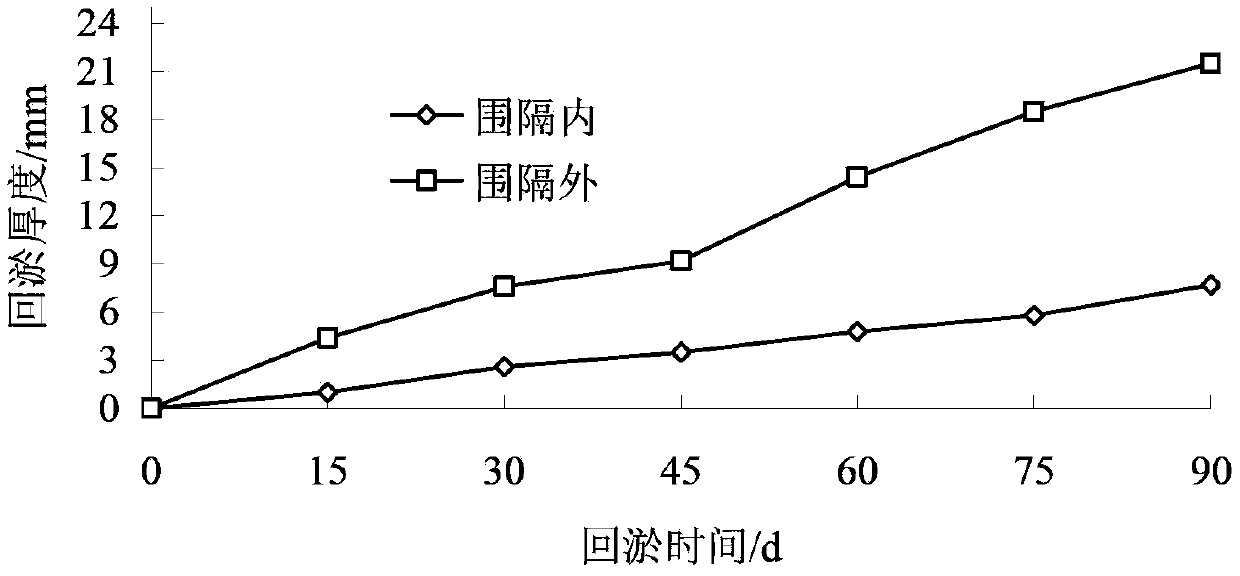Method for controlling bottom mud siltation after dredge
A sediment and dredging vessel technology, applied in chemical instruments and methods, water/sludge/sewage treatment, biological water/sewage treatment, etc., can solve the problem of weakening and loss of sediment mineralization and reduction ability, self-purification of water body Functional degradation and other problems, to achieve the effect of promoting adsorption and degradation, reducing the amount of sediment, and improving self-purification function
- Summary
- Abstract
- Description
- Claims
- Application Information
AI Technical Summary
Problems solved by technology
Method used
Image
Examples
Embodiment Construction
[0027] In this implementation mode, an inner lake that is environmentally friendly dredging in a city in southern my country is used as the target of back-siltation control. The back-siltation control is controlled by setting up a stainless steel enclosure in the nearshore area of the lake. The top of the enclosure is provided with permeable holes to ensure that the enclosure is inside and outside. Free material exchange, enclosure area 20m 2 . The implementation effect of the control technology is verified by comparing the back siltation rate of the water body inside and outside the enclosure. The benthic creatures choose the native benthic creature tremor of the lake. The zeolite used is a natural particle zeolite produced by Gongyi Yiquan Water Treatment Material Co., Ltd., with a particle size of 0.2-0.45 mm.
[0028] Refer to figure 1 In the present invention, a cone-shaped particle zeolite dropping bin (1) is set on a cutter suction dredger, and is connected to a delivery...
PUM
 Login to View More
Login to View More Abstract
Description
Claims
Application Information
 Login to View More
Login to View More - R&D
- Intellectual Property
- Life Sciences
- Materials
- Tech Scout
- Unparalleled Data Quality
- Higher Quality Content
- 60% Fewer Hallucinations
Browse by: Latest US Patents, China's latest patents, Technical Efficacy Thesaurus, Application Domain, Technology Topic, Popular Technical Reports.
© 2025 PatSnap. All rights reserved.Legal|Privacy policy|Modern Slavery Act Transparency Statement|Sitemap|About US| Contact US: help@patsnap.com



